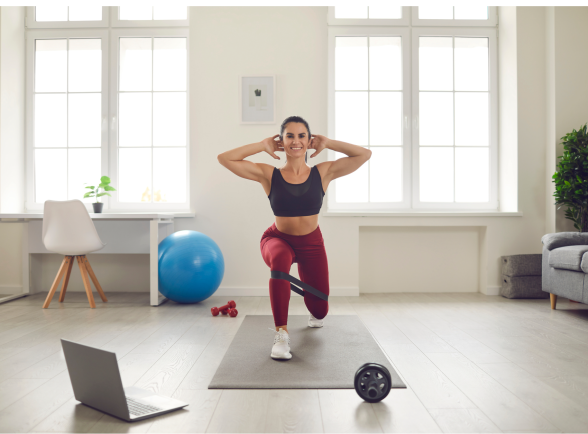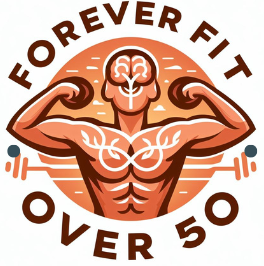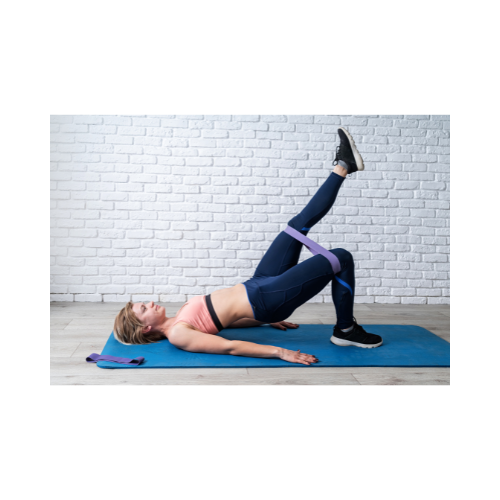Introduction to Resistance Band Training for Women Over 50
Embarking on a fitness journey can be daunting at any stage of life, but for women over 50, finding the right balance between effective exercise and safety is crucial. Resistance band training emerges as an excellent option, offering a versatile, low-impact form of strength training. These lightweight, portable tools not only enhance muscular strength and endurance but also cater to the unique needs of the older demographic, ensuring workouts are both manageable and beneficial.
Benefits of Resistance Band Workouts for Women Over 50
Resistance bands provide a multitude of benefits for women over 50. They are instrumental in improving muscular strength and tone without the stress on joints typically associated with traditional weights. Additionally, these workouts can enhance flexibility, balance, and overall functional fitness, which are vital for maintaining independence and preventing injuries.
Understanding the Safety and Ease of Use of Resistance Bands
One of the key attractions of resistance bands is their safety and ease of use. Unlike heavy weights, bands offer resistance without a significant risk of injury, making them suitable for those with limited experience or those recovering from injury. Their adaptability allows users to adjust the intensity of workouts simply by changing the band’s tension or switching to a different band strength.
How Resistance Band Exercises Can Be Integrated into Daily Routines
Incorporating resistance band exercises into daily routines is straightforward. These exercises can be performed anywhere—from the comfort of your living room to a park—making it easier to stay consistent with a fitness regimen. A few minutes dedicated to resistance band exercises can be seamlessly woven into any part of the day, ensuring regular physical activity without the need for a gym.
Here are some sample exercises
Upper Body Exercises
1. Band Pull-Aparts
- How to Perform:
-
- Hold a resistance band in front of you at chest height with both hands, arms extended, and hands slightly wider than shoulder-width apart.
- Keeping your arms straight, pull the band apart by moving your arms out to your sides.
- Slowly return to the starting position and repeat.

2. Bicep Curls
- How to Perform:
-
- Stand on the resistance band with feet shoulder-width apart. Hold the band with your palms facing forward.
- Keep your elbows close to your torso and curl the hands towards your shoulders by bending at the elbow.
- Lower back down with control and repeat.
3. Chest Press
- How to Perform:
-
- Anchor the resistance band behind you at chest level (you can use a closed door or a sturdy post).
- Facing away from the anchor point, hold the band’s ends in each hand.
- Press your arms forward until they are straight, then return to the starting position and repeat.
4. Seated Rows
- How to Perform:
-
- Sit on the floor with your legs extended, and loop the resistance band around the soles of your feet.
- Hold the band with both hands and row your elbows back, squeezing your shoulder blades together.
- Return to the starting position with control and repeat.
- Incorporating Stretches for Flexibility Along with Resistance Training
Lower Body Exercises
5. Standing Hip Abductions
- How to Perform:
-
- Place a resistance band around your legs, just above your knees.
- Stand with feet hip-width apart, then shift your weight to one foot.
- Lift the other leg to the side against the band’s resistance, then return to the starting position and repeat. Switch sides after completing the set.

6. Glute Bridges
- How to Perform:
-
- Lie on your back with knees bent, feet flat on the floor, and a resistance band looped around your thighs, just above your knees.
- Push through your heels to lift your hips towards the ceiling, pressing your knees outward against the band’s resistance.
- Lower your hips back down with control and repeat.
7. Squats
- How to Perform:
-
- Stand on the resistance band with feet shoulder-width apart, holding the band with both hands at shoulder level.
- Perform a squat by bending your knees and lowering your hips as though sitting back into a chair, keeping your chest up and knees over your toes.
- Return to standing and repeat.

8. Lunges
- How to Perform:
-
- Place the resistance band under the foot of your forward leg and hold the ends with both hands at shoulder height.
- Step back with the other leg into a lunge, lowering your hips until both knees are bent at about a 90-degree angle.
- Push back to the starting position and repeat. Switch legs after completing the set.
Core and Flexibility Exercises
9. Standing Twists
- How to Perform:
-
- Anchor the band at waist height and stand perpendicular to the anchor point with the band in both hands, arms extended.
- Rotate your torso away from the anchor point, keeping your arms straight.
- Return to the starting position and repeat before switching sides.
10. Leg Extensions
- How to Perform:
-
- Sit on a chair with the resistance band looped around one foot and anchored under the other foot or the chair.
- Extend the banded leg until it is straight, focusing on contracting your thigh muscles.
- Return to the starting position and repeat. Switch legs after completing the set.
Incorporating these resistance band exercises into your routine can enhance strength, flexibility, and balance, contributing significantly to overall well-being. Remember to start with a resistance level that feels challenging yet manageable, and gradually progress as your strength improves.
Incorporating Stretches for Flexibility Along with Resistance Training
Including stretches before and after resistance training can enhance flexibility, reduce muscle stiffness, and prevent injuries, making it a comprehensive approach to fitness.
How to Progressively Increase Difficulty and Resistance
Gradually increasing the difficulty of exercises and the resistance of bands ensures continuous improvement and prevents plateaus. This progression can be achieved by either opting for heavier bands, increasing the number of repetitions, or incorporating more challenging movements into the routine.
Mixing in Other Types of Exercises for a Well-Rounded Regimen
For a well-rounded fitness routine, it’s beneficial to mix resistance band exercises with other types of physical activities, such as walking, yoga, or swimming. This diversity not only prevents boredom but also ensures all aspects of physical fitness are addressed.
Importance of Consistency and Setting Achievable Goals
Consistency is key to seeing results. Setting realistic, achievable goals can motivate and guide women over 50 in their fitness journey, making the process more rewarding and sustainable.
Monitoring Progress and Making Adjustments as Needed
Keeping track of progress, whether through a journal, app, or simply noting how you feel, is important for staying motivated and recognizing achievements. Being flexible and willing to adjust the workout routine as needed can help in overcoming plateaus and adapting to changing fitness levels.
Conclusion:
For women over 50, resistance band workouts offer a safe, effective, and adaptable way to enhance physical health. By integrating these exercises into daily routines, focusing on both upper and lower body strength, and progressively challenging themselves, individuals can enjoy increased mobility, balance, and overall well-being. With consistency, a positive mindset, and a willingness to adjust as needed, resistance band training can be a cornerstone of a healthy lifestyle well beyond 50.
Here’s a little transparency: Our website contains affiliate links. This means if you click and make a purchase, we may receive a small commission. Don’t worry, there’s no extra cost to you. It’s a simple way you can support our mission to bring you quality content.



Glad I came across your article in looking for exercises for women over 50. My wife is looking to start somewhere.
Resistance band training makes perfect sense for women over 50 years old. Safer than dumbbells, barbells and a kettlebell workout. I like how you explain and show with images the key exercise and that these are all safe and effective exercises.
We have a set of resistance bands at home and it seems to be as simple as using a 20-30 minute window of time in your day to do some of these exercises. I like it and will show her.
Dear John,
I’m delighted to hear that you found the article on resistance band workouts for women over 50 helpful and timely! It’s fantastic that you’re supportive of your wife’s journey to start incorporating more physical activity into her routine, and resistance band training does indeed offer a safe, effective, and versatile way to achieve her fitness goals. Please keep in mind these exercises aren’t just for women, you can join your wife in this journey as well.
You’re absolutely right; resistance bands are a wonderful alternative to more traditional forms of strength training equipment like dumbbells, barbells, and kettlebells. They not only minimize the risk of injury but also allow for a wide range of exercises that can be tailored to any fitness level. Plus, the convenience of fitting in a meaningful workout in just 20-30 minutes makes it perfectly suited for busy schedules or those days when time is tight.
It sounds like you’re already well-equipped at home with a set of resistance bands, which is great! Encouraging your wife to use them for a variety of exercises will not only help in building strength and flexibility but also in enhancing overall well-being. The key exercises highlighted, along with the visual aids, are designed to ensure that she can perform them safely and effectively.
Thank you for sharing your enthusiasm and plans to introduce her to resistance band workouts. I’m confident that with your support and motivation, she’ll find these exercises both enjoyable and beneficial. Remember, the journey to better health and fitness is always more rewarding when shared. If either of you have any questions or need further guidance as you embark on this new fitness adventure together, feel free to reach out. We will be coming out with an article on Resistance Bands for men soon, so no excuses John, in joining your wife. LOL!!!
Warmest regards and best wishes to you and your wife on this healthful journey!
Gary
Hi,You provide a comprehensive guide to resistance band workouts for women over 50. The inclusion of sample exercises, along with clear instructions and images, makes it accessible for beginners.I like the potential benefits of incorporating resistance band training into daily routines. Overall, it’s a valuable resource for women seeking to improve their strength, flexibility, and overall well-being in a safe and convenient manner, thank you for sharing this beautiful information.
Hi Ela,
Thank you for your kind words and positive feedback! I’m delighted to hear that you found the guide on resistance band workouts both comprehensive and accessible. It’s wonderful that you recognize the benefits of incorporating resistance band training into your daily routine, especially for enhancing strength, flexibility, and overall well-being in a safe way.
If you ever have any questions about the exercises or need further advice on how to advance your routine safely, please don’t hesitate to reach out. Your journey to improved health and fitness is inspiring, and I’m here to support you every step of the way.
Thank you again for your encouragement and for taking the time to share your thoughts. Here’s to your continued health and fitness journey! Please let me know if you have any questions.
Warmly,
Gary
Thank you for this article. Being over 50 I can fully appreciate your insights and gain from the information you have given. It is useful that you have been able to provide some exercises with illustrations on how to perform the exercises. Certainly, the benefits listed in this article are what those over 50 like myself could benefit from. Safety is indeed of concern and you have touched on this vital aspect which helps when making choices and taking risks about these exercises. The fact that these exercises can be done anywhere gives the flexibility to do them at every opportunity anywhere throughout the day.
My question is, “How durable are these bands and, is there a weight limit?”
Hi Tandi,
Thank you so much for your kind words and thoughtful feedback! I’m delighted to hear that you found the article useful and the illustrations helpful. It’s Great to know that the benefits and safety considerations resonate with you, as these are crucial aspects for anyone starting a new exercise regimen, especially for those over 50.
Regarding your question about the durability of resistance bands and weight limits, most high-quality resistance bands are designed to be very durable and can withstand significant wear and tear. However, their longevity can depend on factors such as the frequency of use, how they are stored, and whether they are used within their specified resistance range. It’s always a good idea to inspect your bands regularly for any signs of wear and tear, such as small tears or cracks, and replace them if necessary.
As for weight limits, resistance bands typically come in different resistance levels, which correspond to the amount of weight or tension resistance you will be working against (e.g., 10 lbs, 15 lbs, etc.). It’s important to choose bands that match your current strength and fitness level. Most bands will specify their resistance range (e.g., light, medium, heavy) and the equivalent tension/weight resistance, as I mentioned above.
I hope this helps answer your questions! Feel free to reach out if you have any more queries or need further assistance. Wishing you all the best in your fitness journey!
Warm regards,
Gary
This blog article on resistance band training for women over 50 is a fantastic resource for anyone looking to incorporate effective and safe workouts into their fitness routine. The emphasis on how resistance bands can enhance muscular strength, flexibility, and balance is spot on. I particularly appreciate the detailed breakdown of exercises for both the upper and lower body, which makes it easy for readers to follow along and get started.
Overall, the article does an excellent job of addressing the unique needs of women over 50 and offers a balanced view of how resistance band training can be a cornerstone of a healthy lifestyle. The encouragement to set achievable goals and monitor progress is motivating and practical. Whether you’re new to exercise or looking to enhance your current routine, this guide is an invaluable tool for staying fit and healthy.
Hi Kavitha,
Thank you so much for your thoughtful and encouraging comment! I’m thrilled you found the article helpful and that the focus on resistance band training for women over 50 resonated with you. It’s great to know that the detailed breakdown of exercises made it easy to follow along and get started—my goal was to make fitness accessible and enjoyable for everyone.
Your kind words about addressing the unique needs of women over 50 and setting achievable goals genuinely mean a lot. It’s so important to stay motivated and find routines that fit into our lives, and I’m glad this guide provided that balance for you.
If you have any questions or need further guidance as you continue your fitness journey, please don’t hesitate to let me know. I wish you all the best in staying fit, healthy, and strong!
Thanks again,
Gary